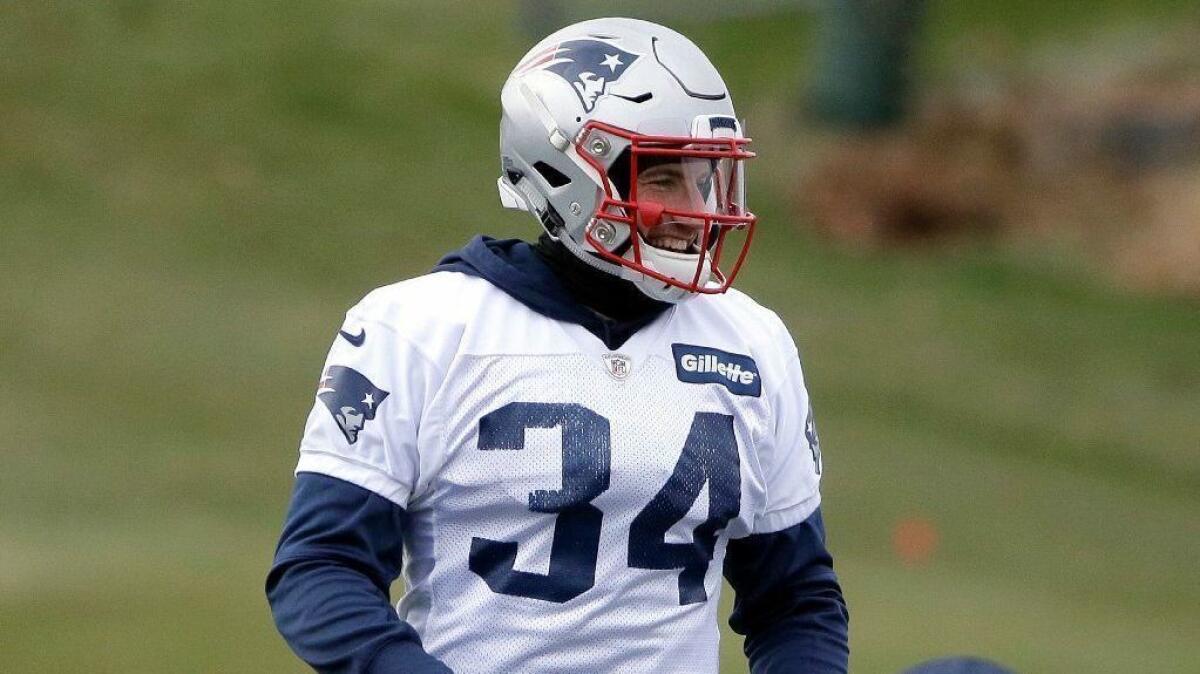One lesson the Patriots learned before the Rams did: Don’t overspend on a running back

Explanations for the New England Patriots’ success usually focus on their coach and quarterback, but the team excels in at least one other area: spending wisely.
In a league governed by a salary cap, smart budgeting means not lavishing money on positions that can be easily filled, like running back. That’s the mistake the Rams made in August 2008, when they signed Steven Jackson to a six-year contract worth more than $40 million, making him one of the NFL’s highest-paid rushers.
Jackson was a great back. His 11,438 yards rushing has him ranked among the top 20 running backs in NFL history. But he was also expensive.
When the new collective bargaining agreement took effect in 2011, Jackson was the fourth-highest paid Ram, and his contract took up 7.65% of cap space — the total amount a team is allowed to spend on players. The highest paid Rams were quarterback Sam Bradford, at 10% of cap space; left tackle Jason Smith, 9.5%; and defensive end Chris Long, 7.65%, but a few dollars more than Jackson.
The $9.4 million earned by Jackson might seem fitting, given that he rushed for 1,145 yards, ninth-best in the league. But the Patriots got a little more yardage for a lot less money from these three backs:
The Rams finished that season 2-14, while the Patriots were 13-3 and advanced to the Super Bowl — so the differences between these teams were immense. A mere $6 million saved at the running back position was a minor advantage, but it indicates that budgeting was just one more area where the Patriots were better.
And who knows? Six million dollars could have bought the Rams a good linebacker, or maybe half of a Tom Brady, whose cap hit in 2011 was $12.9 million.
In 2012, Jackson was the Rams’ third-highest paid player at a hefty $9.2 million (7.69% of cap space) and rushed for 1,045 yards. The Patriots again had a thrifty, three-man answer, nearly doubling Jackson’s yardage for one-fourth the cost:
The Rams finished 2012 with a 7-8-1 record. The Patriots finished 12-4 and advanced to the AFC championship game.
In 2013, Jackson left the Rams to play for the Atlanta Falcons. But it wouldn’t take long for the Rams to make another running back rich, this time Todd Gurley, who last July signed a four-year contract extension that includes $45 million in guarantees and could be worth $60 million.
But Gurley’s deal shows the Rams are learning. His cap hit in 2018 was $7.2 million, which is 11th-highest on the team and 3.98% of cap space. That’s quite a drop from the Steven Jackson levels.
Gurley is cheaper than Jackson, but he’s equally productive: In 2018, Gurley rushed for 1,251 yards.
Let’s see how that compares with the Patriots, who are paying more for their running backs these days:
Each team is getting more than a thousand yards rushing for $7 million and about 4% of cap space. It’s just one more way that the gap between these teams has closed.
Sign up for our daily sports newsletter »
More to Read
Go beyond the scoreboard
Get the latest on L.A.'s teams in the daily Sports Report newsletter.
You may occasionally receive promotional content from the Los Angeles Times.










